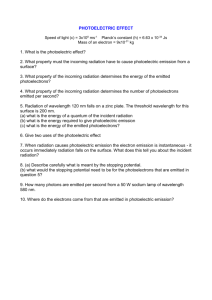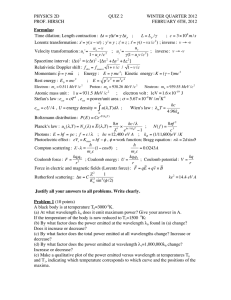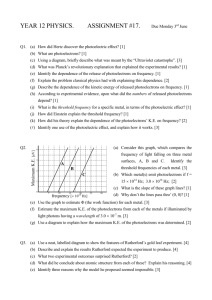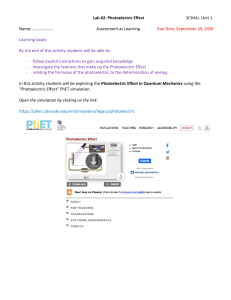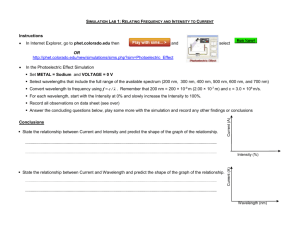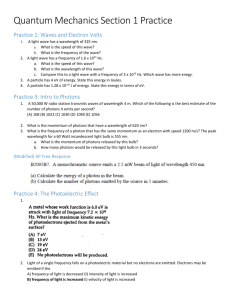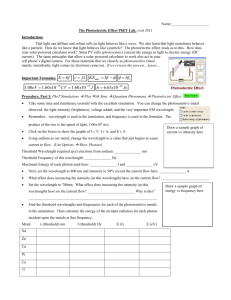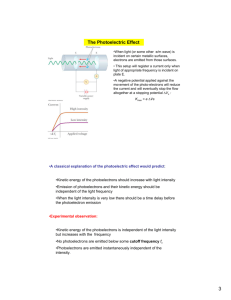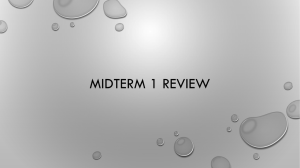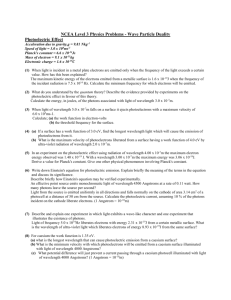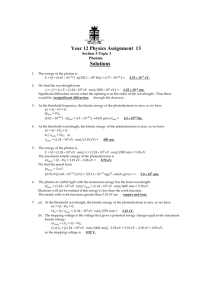File
advertisement
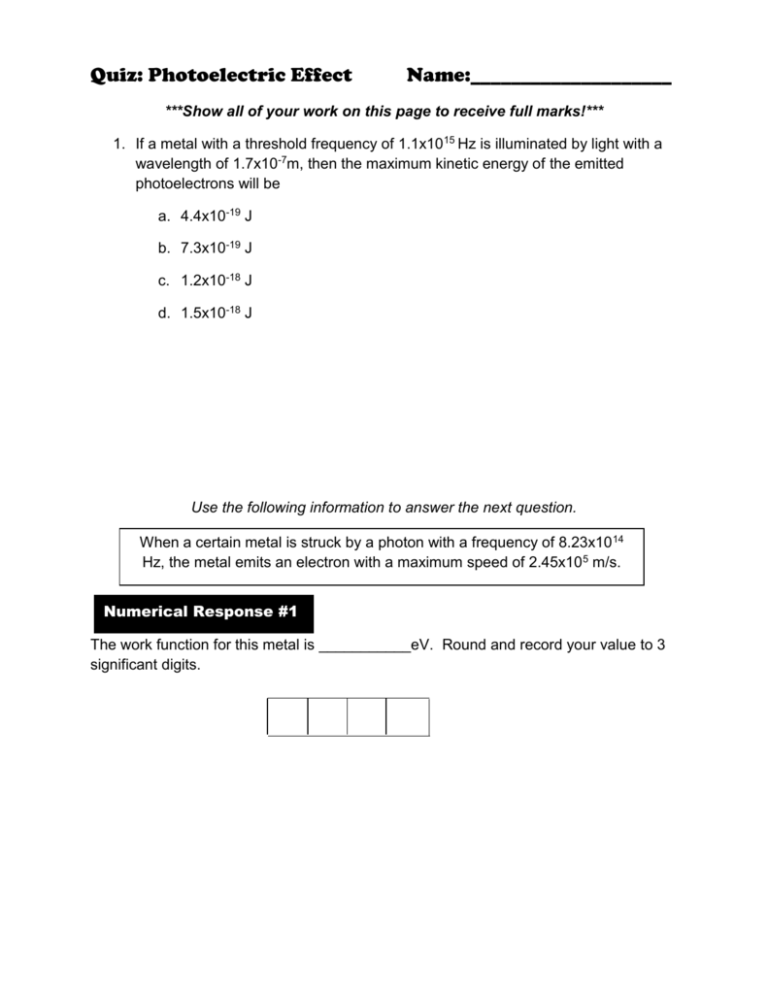
Quiz: Photoelectric Effect Name:____________________ ***Show all of your work on this page to receive full marks!*** 1. If a metal with a threshold frequency of 1.1x1015 Hz is illuminated by light with a wavelength of 1.7x10-7m, then the maximum kinetic energy of the emitted photoelectrons will be a. 4.4x10-19 J b. 7.3x10-19 J c. 1.2x10-18 J d. 1.5x10-18 J Use the following information to answer the next question. When a certain metal is struck by a photon with a frequency of 8.23x10 14 Hz, the metal emits an electron with a maximum speed of 2.45x10 5 m/s. Numerical Response #1 The work function for this metal is ___________eV. Round and record your value to 3 significant digits. Use the following information to answer the next question. A student was studying the photoelectric effect. The student varied the frequency of the incident light source and observed how the speed of the eject electrons changed. The student then plotted the following graph. v2 (m2/s2) Frequency (Hz) The value of the slope of the line of best fit is 1.4x10-3 m2/s and the value of y-intercept is -9.7x1011m2/s2. 2. Use the graph to calculate the work function in eV. Numerical Response #2 If the stopping potential of a photocell is 5.60V, then the maximum speed of the photoelectrons emitted is a.bcx10d m/s. Record your values for a, b, c, and d. Numerical Response #3 If cesium has a work function of 3.8eV, the threshold frequency of cesium is a.bx10cd Hz. Record your values for a, b, c, and d. 3. The stopping potential of photoelectrons emitted from a surface illuminated by light with a wavelength of 490nm was 0.710V. When the incident EMR was replaced with EMR of a different wavelength, the stopping potential was then 1.43V. a. What is the work function for the surface? b. What is the wavelength of the new light? Use the following information to answer the next question. In a photoelectric effect experiment, a student observes how changing the intensity of the radiation incident upon a metal affects the observed photoelectrical current. The frequency of the incoming radiation is kept constant as a controlled variable. 4. If the radiation incident on the metal has a frequency that is below the threshold frequency, which of the lines in the graph given above displays the observed current as a function of intensity? a. A b. B c. C d. D
